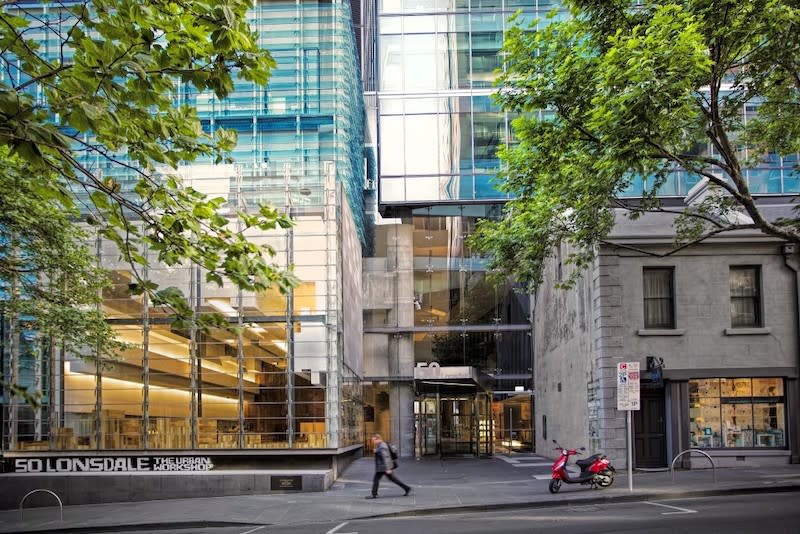Resources
Newsletter
Stay up to date and with the latest news, projects, deals and features.
Subscribe
Superannuation fund-backed property investor ISPT has a long history of respectful adaptive reuse solutions in heritage contexts, from the first Australian H&M within Melbourne’s GPO to the seat of National Intelligence in Canberra at The Robert Marsden Hope Building, to the masterful restoration of Brisbane’s Regent Theatre.
Never one to shy away from the inherent challenges and responsibilities involved with the development of heritage places, ISPT is currently seeking approval to reinvigorate the former Land Titles Office (LTO), one of Victoria’s most valued heritage buildings.
The project will transform the derelict LTO into a mixed-use development that reflects the ever-changing, vibrant and lively nature of the city of Melbourne, whilst simultaneously remaining respectful and sympathetic to its heritage value.
Recognition of the unquestionable importance of this site also demands an equal acknowledgement of its current state of disrepair.
A major restoration project is required to prevent further loss of significant heritage fabric, however the cost of such an important restoration is immense and far exceeds the commensurate value that can be derived from just the heritage building’s limited net lettable area alone.
A key fundamental proposed to therefore underpin the restoration is the provision of a new office tower that responds to the demand for high quality, sustainable commercial office space in Melbourne's post pandemic CBD.
“In keeping with best practice principles for designing new buildings that respect the assessed significance of heritage places, the contemporary tower element with its deliberately calm façade is set back sufficiently behind the Former Land Titles Office form to allow the heritage building to retain its prominence in the Queen Street streetscape,” ISPT regional manager, development services Jason Lourensz said.
“This crucial element will generate the funds required to provide the restoration of the LTO office and Strong Room buildings—structures of architectural, technical and historical significance that have never before been open for the people to appreciate.
“Built in 1885, the restoration of the LTO has been 150 years in the making, and our vision strives to deliver heritage restoration coupled with the long-term viability of a new tower that has been specifically designed as a calm backdrop to the rich historical context.”
This project, together with the vibrant VU City Tower delivered by ISPT in early 2022, provides the opportunity to develop a new precinct that elevates the rich history of the building while creating a connected community in the heart of Melbourne.
“Heritage restoration and integrated development is a delicate balance. It is vital that any redevelopment of these assets delivers the highest quality in design outcomes, while respecting the area’s unique character to deliver a transformational project for the benefit of generations to come,” Lourensz said.

But for ISPT this vision goes more than skin deep—the developer and property investor has been investing and transforming heritage precincts since 2005.
It began with the award-winning transformation of 50 Lonsdale Street, known as the Urban Workshop Office Project, delivering an innovative legacy project that was well ahead of its time.
Winning an array of urban and architectural design awards, as well as recognition for the exemplary treatment and retention of important heritage building fabric that dated back to the foundation years of the city itself.
ISPT’s Spring Place precinct is home to some of the city’s oldest buildings, including two heritage buildings from the 1900s, the Church of England’s Mission Hall and the Elms Family Hotel.

At 271 Spring Street, these buildings have been preserved and celebrated by ISPT, undergoing a conversion into a striking 16-level boutique office building that brings together the best in architectural design and heritage conservation, expanding upon the rich and fascinating history of the site.
The development of 271 Spring Street exemplifies the intricate balancing of needs associated with developing a high-quality office tower on a heritage site.
Heritage works intertwined the historic building fabric and contemporary architecture to provide an innovative way to humanise the large-scale tower forms, creating an exemplary workplace that integrates with the surrounding streetscape.
“We believe that enabling the viable commercial redevelopment of heritage places in our cities is vital for continued economic growth, provided this is coupled with sensitive preservation and restoration of the rich fabric and history of our cities. In every case, our preservation and restoration has been subsidised by the sensitive addition of commercial developments," Lourensz said.
“While constraints are faced through the development of heritage sites, these challenges typically push the project team to create solutions that ultimately produce something truly special.
“By integrating the historical nature of a building with a new design, heritage restoration can greatly enhance the site and the end value of what we are delivering.”
Main image: Artist Impression, 283 Queen Street Melbourne
The Urban Developer is proud to partner with ISPT to deliver this article to you. In doing so, we can continue to publish our daily news, information, insights and opinion to you, our valued readers.